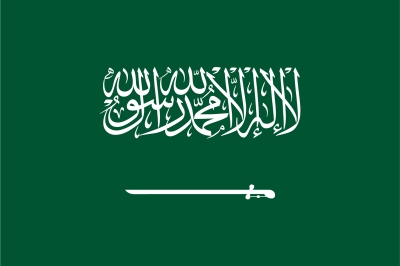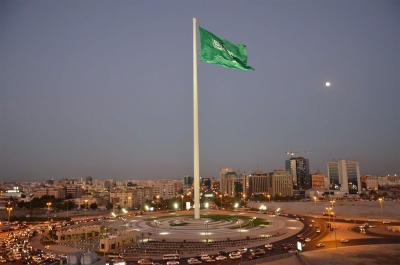
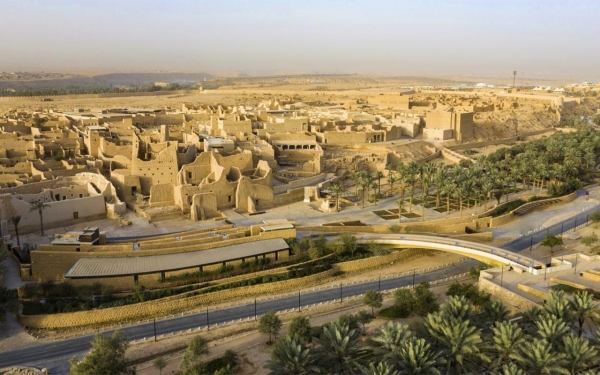
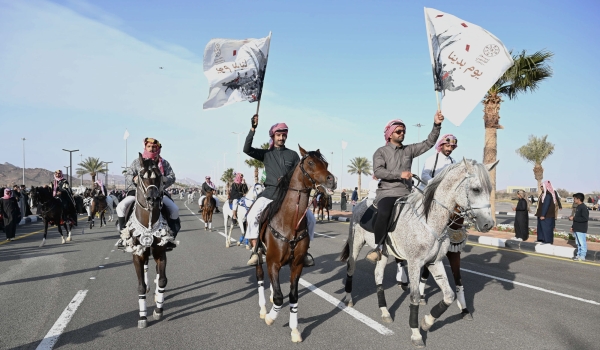
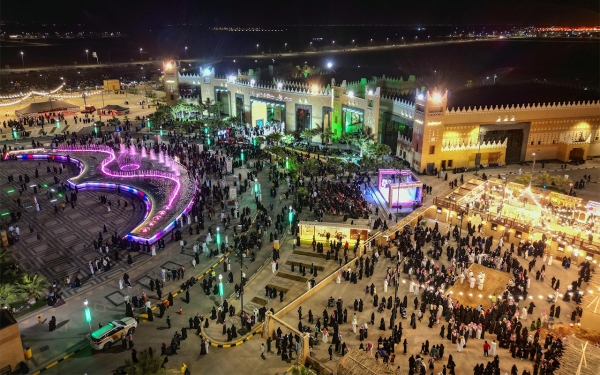

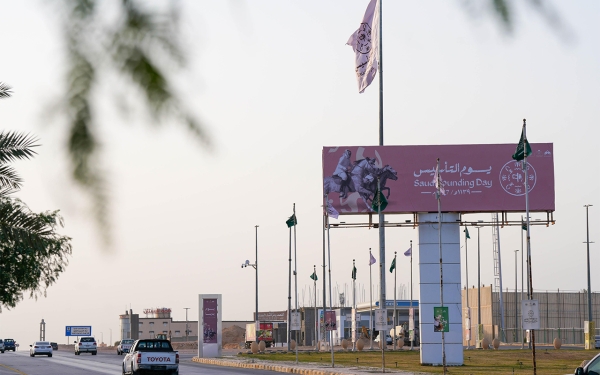
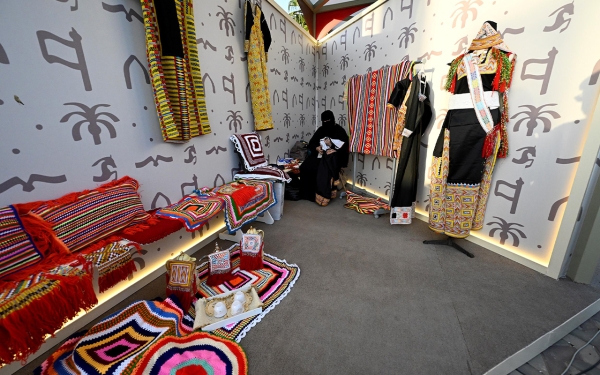
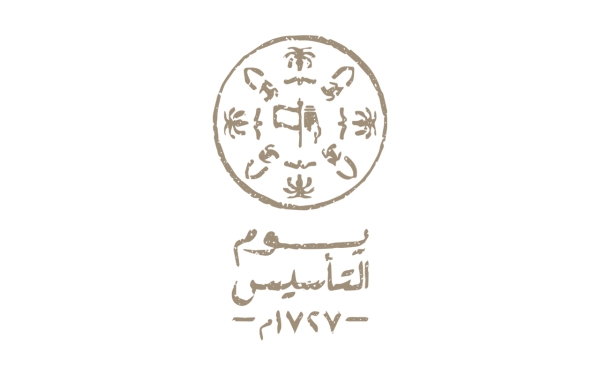
The Saudi Founding Day is a national occasion in the Kingdom of Saudi Arabia, commemorating the founding of the First Saudi State in 1727 by Imam Mohammed Bin Saud. It was approved by a Royal Decree issued by the Custodian of the Two Holy Mosques, King Salman Bin Abdulaziz Al Saud, on January 27, 2022. February 22 of each year is designated as the anniversary of the founding of the Kingdom and an official holiday.
Contrary to popular belief about the modernity of the history of the Saudi state, the history of the Saudi state dates back to ancient times. The establishment of the First Saudi State goes back more than three centuries, during which it maintained its resilience and independence from any foreign influence. Since its establishment to the present day, it remains a purely Arab state in terms of both its rulers and people.
What is Founding Day?
The story behind the Founding Day
It is the day on which the First Saudi State was founded by Imam Mohammed Bin Saud on February 22, 1727. He chose Diriyah as the capital of his modern state. Up until recently, some sources linked the origin of the First Saudi State to the arrival of Sheikh Mohammed Bin Abdulwahhab in Diriyah and the announcement of his religious call. However, this date is much later than the founding date and is not related to the state's emergence. The actual date of the emergence of the First Saudi State was when Imam Mohammed Bin Saud assumed power in Diriyah and established the First Saudi State there.
Although this day was not known as the Founding Day until after the issuance of the Royal Decree adopting the name and celebrating it as a national occasion, it was already recognized in the historical documentation sources of the Kingdom as the founding date.
Announcement of Founding Day
The celebration of Founding Day was adopted by a Royal Decree on January 27, 2022. The Royal Decree states that February 22 is designated annually to commemorate the founding of the Saudi state. It will be celebrated as Founding Day and become an official holiday, in honor of the deep-rooted history of the Saudi state, and the strong connection of its citizens with their rulers, spanning from the era of Imam Mohammad Bin Saud three centuries ago until today.
Goals of Founding Day commemoration
Choosing Founding Day to commemorate the glory of the First Saudi State is a call to take pride in the deep-rooted origins of the state since ancient times. It's also a call to strengthen the bond between citizens and their leaders who have led this country to its glory, and emphasize pride in national unity, security, and stability, which were established by the Saudi state, and celebrate the achievements of the kings, the sons of the Founder King Abdulaziz Bin Abdulrahman Al Saud, in enhancing development and unity.
The visual identity of Founding Day
The Kingdom launched the visual identity for Founding Day, which is a logo containing five historical symbols of the First Saudi State. At its center is an icon of a man holding a flag, surrounded by symbols representing prominent heritage elements: the palm tree, the Saudi flag, the Arabian horse, the falcon, and the souq. The logo is inscribed with Founding Day 1727 in one of the historical writing styles, inspired by an ancient manuscript that chronicles events of the First Saudi State.
Founding roots
Lineage of Al Saud
The lineage of Al Saud traces back to their ancestor, Prince Mani' Bin Rabia al-Muraydi. They descend from al-Marada clan of al-Duru', part of the Banu Hanifa who lived in the eastern part of the Arabian Peninsula along the coast of the Arabian Gulf. They founded a city and named it Diriyah; the first Diriyah, after their clan, following their migration from the central Arabian Peninsula in the tenth century due to drought and arid conditions. In a later period, the Banu Hanifa tribes returned to Hajar al-Yamamah after stability was restored. During this time, Mani' Bin Rabia al-Muraydi al-Hanafi, while in his hometown of Diriyah in the eastern part of the Peninsula, received an invitation from his cousin, Ibn Dira', the ruler of the city of Hajar in al-Yamamah, to bring his tribe and settle in the region of his ancestors and forefathers.
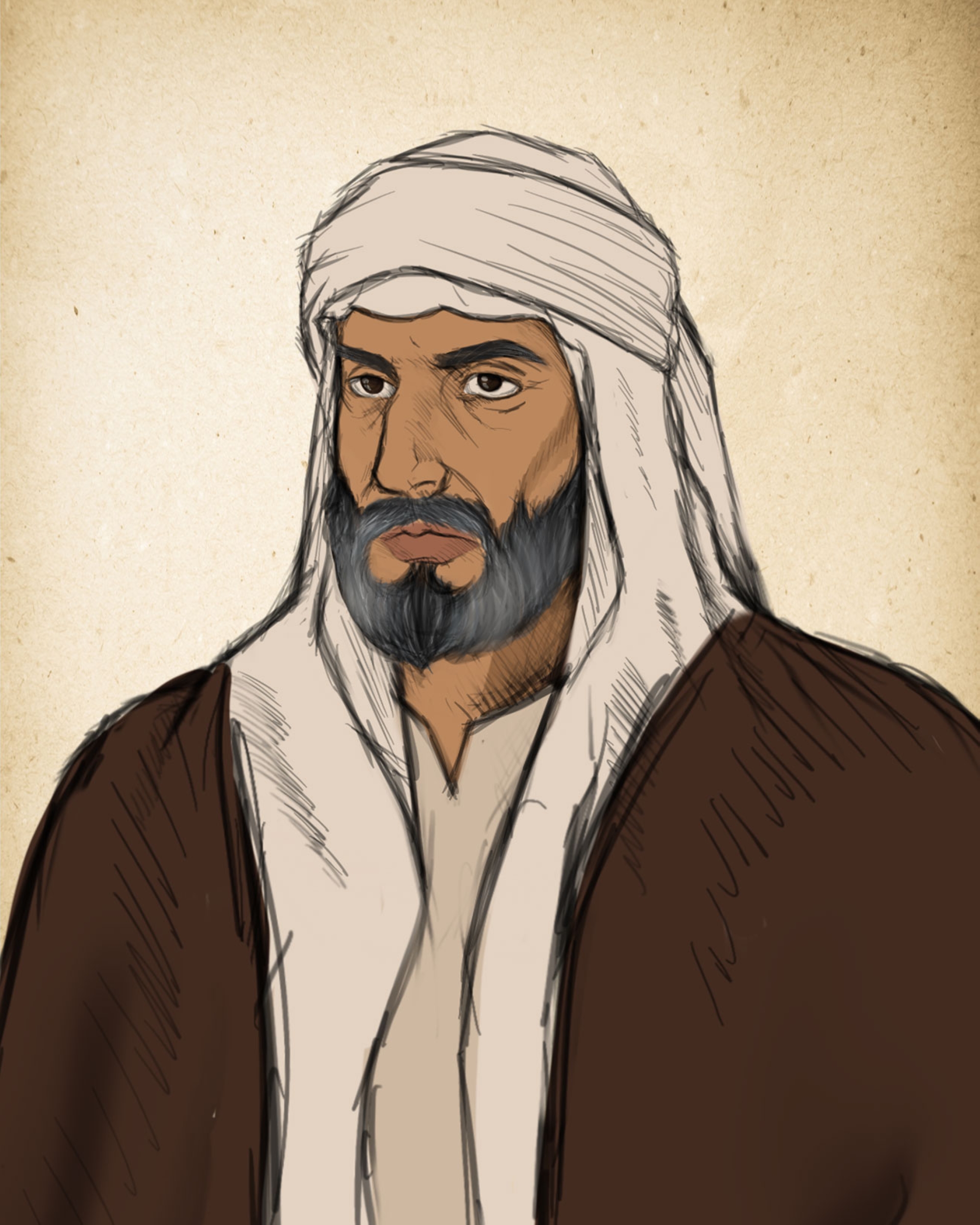
The settlement of Banu Hanifa in al-Yamamah
Prince Mani' Bin Rabia al-Muraydi al-Hanafi, the thirteenth ancestor of the Custodian of the Two Holy Mosques, King Salman Bin Abdulaziz Al Saud, moved with the members of his tribe from the eastern part of the Arabian Peninsula to its center, specifically to Hanifa Valley in the region of al-Yamamah. This region includes the famous Tuwaiq Mountains range, which today symbolizes the determination and strength of the people of the Kingdom.
Upon arriving in Wadi Hanifa, Prince Mani' established the city of Diriyah, the second Diriyah, in the areas of Ghasaybah and al-Mulaybeed. He chose Ghasaybah as his ruling headquarters and al-Mulaybeed as his agriculture headquarters in 1446. It was named Diriyah after the name of Prince Mani's clan, which had resided in the eastern part of the Arabian Peninsula. Later, the emirate was ruled by the sons and grandsons of Mani' al-Muraydi over a period of 280 years. This was the nucleus for the establishment of the First Saudi State.
Founding capital
Diriyah location
Diriyah, the capital of the First Saudi State, is located in the center of the Arabian Peninsula, specifically in the region of al-Yamamah, which occupies a large area of the peninsula. It stretches over one thousand km from north to south and is five hundred km wide. The famous Tuwaiq Mountain range, celebrated by poets, lies at its center. Al-Yamamah includes several regions, the most famous being al-Arid, al-Washm, Sudair, al-Far', al-Aflaj, Wadi al-Dawasir, and dozens of valleys that intersect its plains and mountains. It also contains several famous springs, such as al-Khadra and al-Hait. Al-Yamamah, formerly known as al-Khadra due to its fertile soil and abundant trees, is home to Wadi Hanifa, one of the important valleys of the Arabian Peninsula. It occupies a strategic location in the region of al-Yamamah, serving as a hub for human settlement since ancient times and a significant station in the center of the Peninsula for pilgrimage and trade caravans in various historical eras.
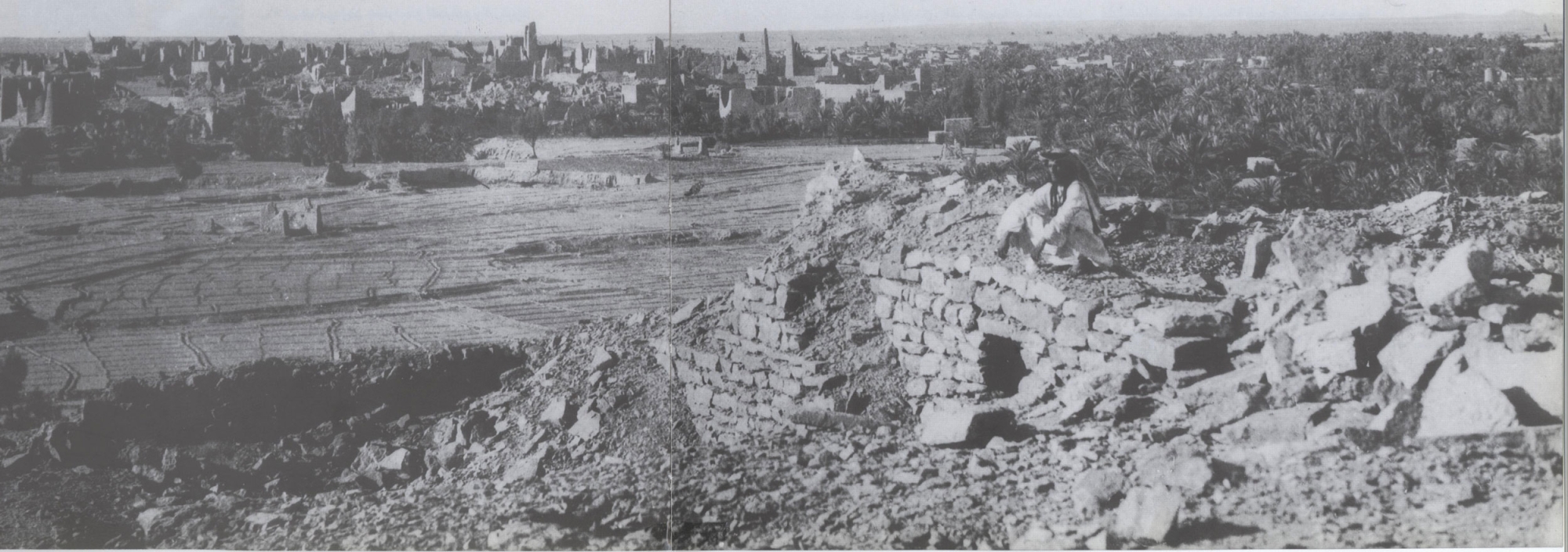
The history and status of Diriyah
The city of Diriyah is located in a strategic position suitable for a major state capital, possessing prominent features due to its location on the banks of one of the important valleys in Najd, Wadi Hanifa. Its position at the heart of one of the major trade routes also added to its significance. This route started from the south of the Arabian Peninsula, passed through Najran, headed north to al-Yamamah and then to Diriyah, and from there, it branched north towards Dawmat al-Jandal, east towards Iraq, and west towards the Hejaz. This route was also part of the Hajj trail coming from Persia, Iraq, and Central Asia. Travelers used this route, passing through Diriyah on their way to Makkah al-Mukarramah. The importance of Diriyah increased after its establishment by Mani' al-Muraydi, who, along with his sons and grandsons, worked to secure and service this route. After the establishment of the First Saudi State by Imam Mohammed Bin Saud, this key route gained even more prominence for trade and pilgrimage caravans due to Imam Mohammed Bin Saud’s policy of securing the route and establishing relations with the tribes through whose territories it passed, agreeing with them on maintaining security and providing necessary services for its beneficiaries.
In the old towns of the Arabian Peninsula, it was customary for a town, at its inception, to be exclusively inhabited by a single family. Only after decades would this family allow specific individuals or families to move into their town based on an agreement between them. However, this rule was not followed in the city of Diriyah. Since its inception, Diriyah has been a destination for migrants from various parts of the Arabian Peninsula and beyond. Many people from different regions of the Arabian Peninsula have lived in or visited Diriyah. The city was also flexible in its expansion depending on its political stability. These factors and experiences gathered in Diriyah were well understood by Imam Mohammed Bin Saud, under whose leadership the city-state in Diriyah transitioned into a larger state, which was called the First Saudi State.
The Emirate of Diriyah
Since its foundation, several princes have succeeded one another in the emirate of Diriyah, each having a significant impact on its history. Foremost among them was Mani' al-Muraydi, who founded the city and established its emirate. Then came Rabiah Bin Mani', who completed the establishment of the emirate, and Musa Bin Rabiah, under whom the emirate's influence increased. Ibrahim Bin Musa is credited with securing the pilgrimage and trade routes that passed through Diriyah. Markhan Bin Ibrahim enhanced the emirate's influence, and during the rule of Muqrin Bin Markhan, the emirate of Diriyah expanded. Mohammed Bin Muqrin's rule lasted a long time, and under Saud Bin Mohammed Bin Muqrin, the emirate of Diriyah's power grew even more, and he is attributed with the pride of the 'Knight of al-Auja and I am the son of Muqrin'. Lastly, Mohammed Bin Saud, the founder of the First Saudi State and its first Imam.
The foundation of the First Saudi State
Imam Mohammed Bin Saud
Imam Mohammed Bin Saud Bin Mohammed Bin Muqrin was born in 1679, and he was raised in Diriyah. In his youth, he gained much from his political experience, working alongside his father in managing the affairs of the emirate, which gave him a thorough understanding of its conditions. Imam Mohammed Bin Saud took part in the defense of Diriyah when it was attacked by Sa'dun Bin Mohammed, the leader of the Bani Khalid in al-Ahsa, where they stood firm against the invading army and managed to repel them. Imam Mohammed Bin Saud was a ruler raised in a household of honor and leadership. He learned politics and ways to deal with neighboring emirates and nomadic tribes. He had a significant impact on stabilizing the conditions in the emirate before he assumed power.
Imam Mohammed Bin Saud had a visionary outlook. He studied the conditions of his emirate and those surrounding it, specifically, and the center of the Arabian Peninsula in general. Upon assuming power, he began planning for change from the prevailing pattern of those days. He set a new course in the history of the region, characterized by unity, education, culture dissemination, enhancing communication between members of the community, and maintaining security. He had six sons: Abdulaziz, Abdullah, Saud, Faisal, Ali, and Markhan, and two daughters, Haya and Tarfa.

Imam Mohammed Bin Saud's ascension to power in Diriyah
Before Imam Mohammed Bin Saud assumed power, Diriyah was surrounded by chaos and instability, with multiple feuding leaders and emirates vying for power in the neighboring towns. Diriyah was in no better condition, having gone through several internal conflicts that led to weakness and internal division within it. Among these events was the dispute over the Emirate of Diriyah between his uncle, Prince Muqrin Bin Mohammed, and Prince Zaid Bin Markhan, as well as the spread of the plague in the Arabian Peninsula, which caused the death of many tribe members. However, Imam Mohammed Bin Saud managed to overcome all these difficulties, unite Diriyah, and spread security and stability throughout it.
From the perspective of establishing unity in Diriyah, the idea began to lead Imam Mohammed Bin Saud to establish a centralized, unified state, which was the First Saudi State. He first unified the two parts of Diriyah; Ghasaybah and al-Mulaybeed, and worked on securing stability in them and in the surrounding tribes and towns. He was keen on protecting the pilgrimage and trade routes passing through Diriyah, coming from the east and the northeast of the Arabian Peninsula, making it a vital hub for trade. He also focused on improving the economic conditions of the state and organizing its resources, as well as expanding construction in Diriyah. He built the Tarafiyah Neighborhood in Samhan, which became the center of governance at that time, and constructed the wall of Diriyah for its protection.
Borders of the First Saudi State
After organizing the internal affairs of the state and establishing security and stability, Imam Mohammed Bin Saud embarked on the unification of the surrounding regions in Najd province. He personally led the unification campaigns and at that time faced a number of external attacks that sought to destroy the state. The tribes and towns surrendered their emirates to Imam Mohammed to become part of the Saudi state under its protection, and he appointed a prince from among its people. This stage is considered the first phase of the unification of the Saudi state, which was completed during the reigns of his sons and grandsons. Four Imams ruled and unified the state over a period of ninety-four years.
Forty years after the foundation and leadership of the state, Imam Mohammed Bin Saud passed away in 1765. His son, Imam Abdulaziz Bin Mohammed, succeeded him in rule. He expanded the First Saudi State by annexing regions in Najd and built the Turaif Neighborhood, moving the center of governance there instead of Tarafiyah. The Turaif Neighborhood is now a significant archaeological site in the history of the Kingdom and was listed by The United Nations Educational, Scientific and Cultural Organization (UNESCO) as part of the World Heritage in 2010. In this neighborhood, he built Salwa Palace, which later became the administrative and political headquarters for the Imams of the First Saudi State.
Following in the footsteps of his father, Imam Abdulaziz Bin Mohammed, from the time he took power, he first focused on unifying the Arabian Peninsula. Under his rule, the Eastern Province joined, and the borders of his state extended to Hejaz Province, Aseer Province, and the north of the Arabian Peninsula. During his reign, he ensured the security of the pilgrimage routes and caravans, and he served the pilgrims. He concentrated his efforts on education and encouraged writing and calligraphy, leading to the emergence of the first school for the art of writing and copying in Diriyah.
The First Saudi State reached the pinnacle of its expansion during the rule of the third Imam of the state, known as Saud the Great, who is Imam Saud Bin Abdulaziz Al Saud. He assumed leadership after the death of his father in 1803. Since taking the reins of power, he managed to unify the entire Hejaz region, including the Two Holy Mosques, and brought them under his rule. His era marked a turning point in the history of Hajj and the Two Holy Mosques, as he personally led the Hajj campaigns each year to ensure the service and care of the pilgrims. It was during his rule that the Saudi state began the annual tradition of covering al-Kaaba al-Musharrafa with the Kiswah, and under his reign, security, political stability, and unity were established throughout the state.
Founding society culture
Saudi Ardah
It is a rhythmic dance performed by men. It has historical roots in the Saudi state, representing a form of the enduring bond between the leadership and the people. It evokes a spirit of enthusiasm as they perform in front of the leader to show love for the land and loyalty to the leader. It was traditionally performed in preparation for war to prepare the army for the atmosphere of battle. After the establishment of security and the stabilization of the state, the Ardah is now performed as an expression of joy. The Ardah begins with Hawrabah, which is the initial call for the dance, followed by a group performance that stirs enthusiasm, with a rhythmic unity between what is called al-Takhmir and al-Thalith, which are the harmonious beats between the large and small drums, and special poetic ode known as al-Harbi. The Saudi Ardah is distinguished by its dignity and solemnity, with the presence of the flag and swords as if it were a scene from an actual war. It also presents a beautiful visual scene embodied in the uniformity of attire. The performance concludes with al-Zamiya, a verse chanted collectively by the performers with escalating volume and rhythm, saying: Tahta Bayraq Sayidi Sama’an Wa Ta'a (Under the banner of my King, we heard and we obeyed), a phrase that reaffirms the love and respect for the land and the leader.
The pride of al-Auja
It is a historical pride that engenders enthusiasm, pride, and national spirit, associated with the Saudi state. Al-Auja refers to Diriyah because it lies along the meandering nature of Wadi Hanifa. It demonstrates the pride and strength of its inhabitants and those associated with it due to Diriyah’s location on the banks of the meandering Wadi Hanifa. This pride continued to be used during the reign of King Abdulaziz to signify the Kingdom’s connection to the origins of the Saudi state’s founding in Diriyah. The pride of al-Auja has been used in many poems, both old and recent, to arouse vigor, pride, and self-esteem among the Saudi people.
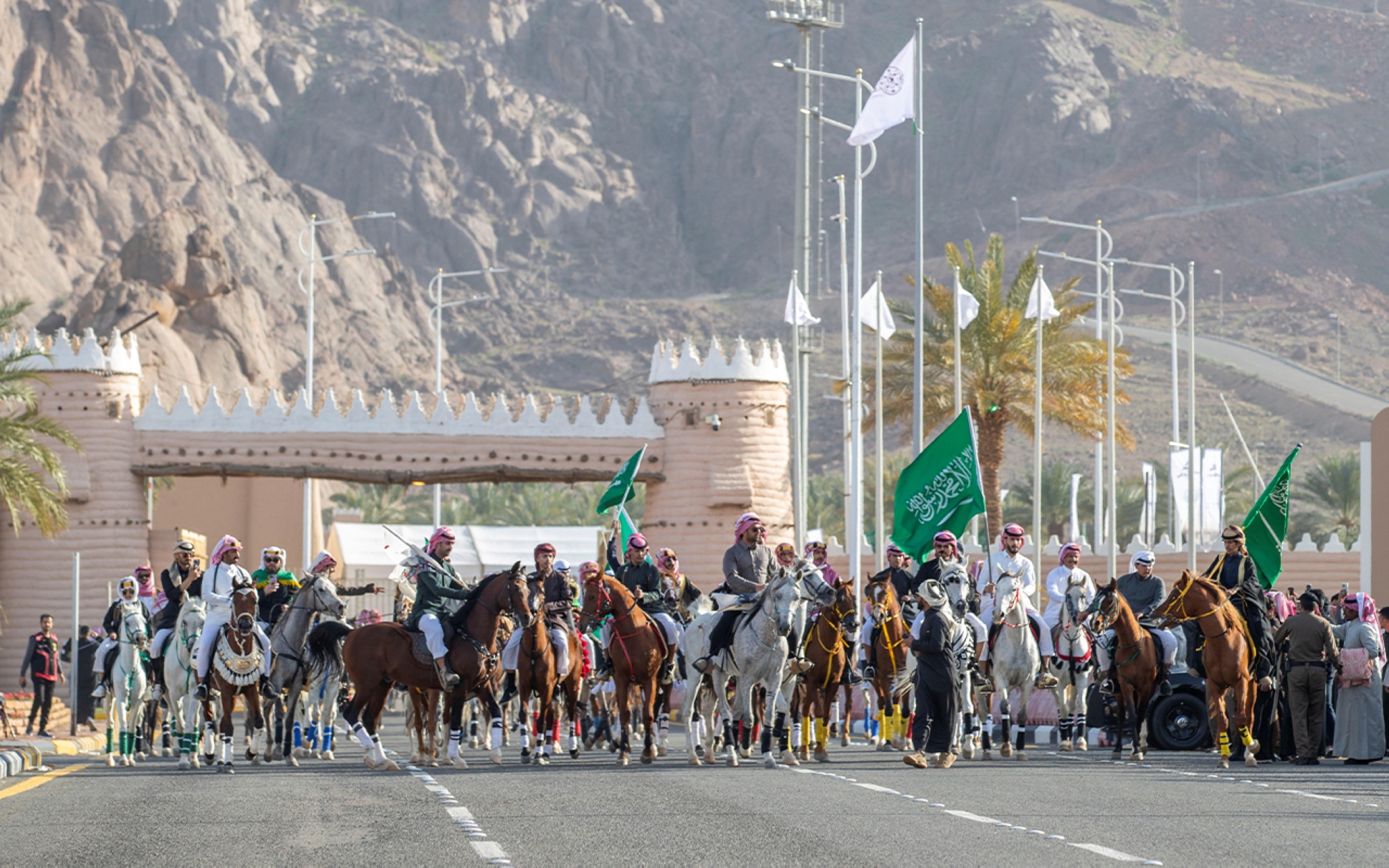
Traditional costumes
The traditional costumes within the founding society's culture represent a significant historical aspect, reflecting the lifestyle of the founding community in the First Saudi State of the fathers and grandfathers, and what they transmitted in terms of values, customs, and traditions. They also indicate the level of social, cultural, and economic status during that period. Due to the expansion of the Kingdom and the diversity of its regions, each region distinguished itself with its own traditional garments, sharing some garments with only a few differences.
In the northern part of the Kingdom, the Bedouin women wore the Muhawthal, considered the primary outer garment. It is a long dress named after al-Hathl, which means the folding of the dress. Women fold it at the waist and tie it with a belt woven from red or black cotton or woolen threads. Another garment is Sharsh or Mudraqa, a loose-fitting garment with long sleeves, and the Zabon, which has two types: one is decorated for celebrations, and the other is plain. Additionally, they wore al-Jubba, a loose garment similar to the Zabon but shorter. Urban women wear the Maqta, a wide and long dress with a round neck, and the Kurta, which differs from the Maqta by having a seam at the waist. They also wear the Mufarrij over daily clothes, which are very wide with square sleeves. The Murawdin is a long, multi-colored, and decorated dress with triangular long sleeves that reach the ground. Lastly, the Dara'a, a long, loose dress with wide, long sleeves.
In the southern part of the Kingdom, there is a variety of men's clothing. Men wear the patterned thobe, the Thobe al-Muzanad, the Thobe Mudhail, and the Izar, as well as the Mithlouth, Hawk, al-Jarafi, and the striped Musanaf, which is a piece of cloth wrapped around the waist and secured with a belt. In some southern regions, men wear something called al-Sabtah, which is a cotton fabric dyed blue or other colors and placed on the shoulder. During winter, they wear the Shamleh, a cloak made of sheep's wool. Men also wear a belt or Kamar, a leather strap placed around the waist and studded with metal pieces. They cover their heads with a turban called Sumadah, and during winter, they wear a hat called Qubba.
In the southern part of the Kingdom, women wear the Sudrah, a black garment that covers the entire body and is embroidered with bright colors. It has several names, including al-Mahbouk, al-Matraz, al-Maklaf, as well as Kurta, Jaljalan, Makmam, Majnab, and Muznadah. They cover their heads with various fabrics, the most important being al-Shayla, al-Misr, and al-Maqlama. Southern women have a preference for adorning themselves with fragrant perfumes and aromatic plants, which they place on their heads in an eye-catching manner, like a wreath, referred to as Mak'as or Gharaaz.
In the central part of the Kingdom, the men's ancient attire resembles the current thobe. Its manufacturing takes into account the climatic environment in terms of fabrics: heavy fabrics are used in winter and lighter ones in summer. It is wide with long sleeves and is called Maqta. Men also wear Murowdin over it, similar to the thobe but with triangular and long sleeves. Women in the central region wear two types of dresses. The first type is made of cotton and is called Thobe al-Karbas, usually in green and black colors. The second type is dresses made from silk decorated with various colors. Young girls wear the Makhnaq, a transparent fabric of chiffon or tulle that is fully sewn except for the neck opening to reveal the face.
In the eastern part of the Kingdom, the men's clothing consists of headwear, which includes the Qahfiyah or Taqqiyah, a white cotton cap, and the Ghutrah, a square piece of cloth folded into a triangle and worn on the head, secured with an Uqqal made of wool threads. Men wear the Dishdasha, similar to the Thobe in the central region, and underneath it, the Wizar or Izar, a rectangular piece of white cotton fabric, often striped, wrapped around the lower part of the body. Sometimes, an outer garment called the Zabon, a long robe with a front opening, and the Dagla, similar to the Zabon but with a high collar and embroidery, are worn. Men may also wear the Sudairi, a vest covering the chest area and open in the front, and the Bisht or Mishlah, a wide, rectangular cloak made from light or heavy fabrics, depending on the weather. Women's clothing in the east of the Kingdom is similar to that of women in the central region of the Kingdom.
In the western part of the Kingdom, women wear the Thobe al-Muzannad, Zabon, Kurta, Arabic Thobe, Thobe Masdah, Black Thobe, Dawak Thobe, Mabqar Thobe, Maqta or Mudraa Thobe, Sudrah, Sawn Thobe, and Masdar Thobe. For men, the traditional attire includes the Thobe, Shemagh, Uqqal, Sudairi, and Bisht.
Traditional dishes
Women in Diriyah were historically renowned for their culinary skills. Key ingredients in their cuisine included wheat, which was crushed or ground and then cooked like rice, sometimes coated with fat. Dishes from that era included Thareed, made from bread and often combined with meat, ghee, or other ingredients, and Jareesh, a popular dish made by grinding wheat grains with a stone tool similar to a millstone called Mujrasha. Jareesh is then cooked in meat broth for an extended period until tender. Rice, bread, Asida, and various types of meat were significant in the Najd region's cuisine, with different preparation methods like boiling, grilling, or stewing. Women in Najd also traditionally prepare ghee, Laban (a milk product), dates, and some spices such as pepper, which they dry and grind, mix with dried lemon, and use to flavor various dishes.
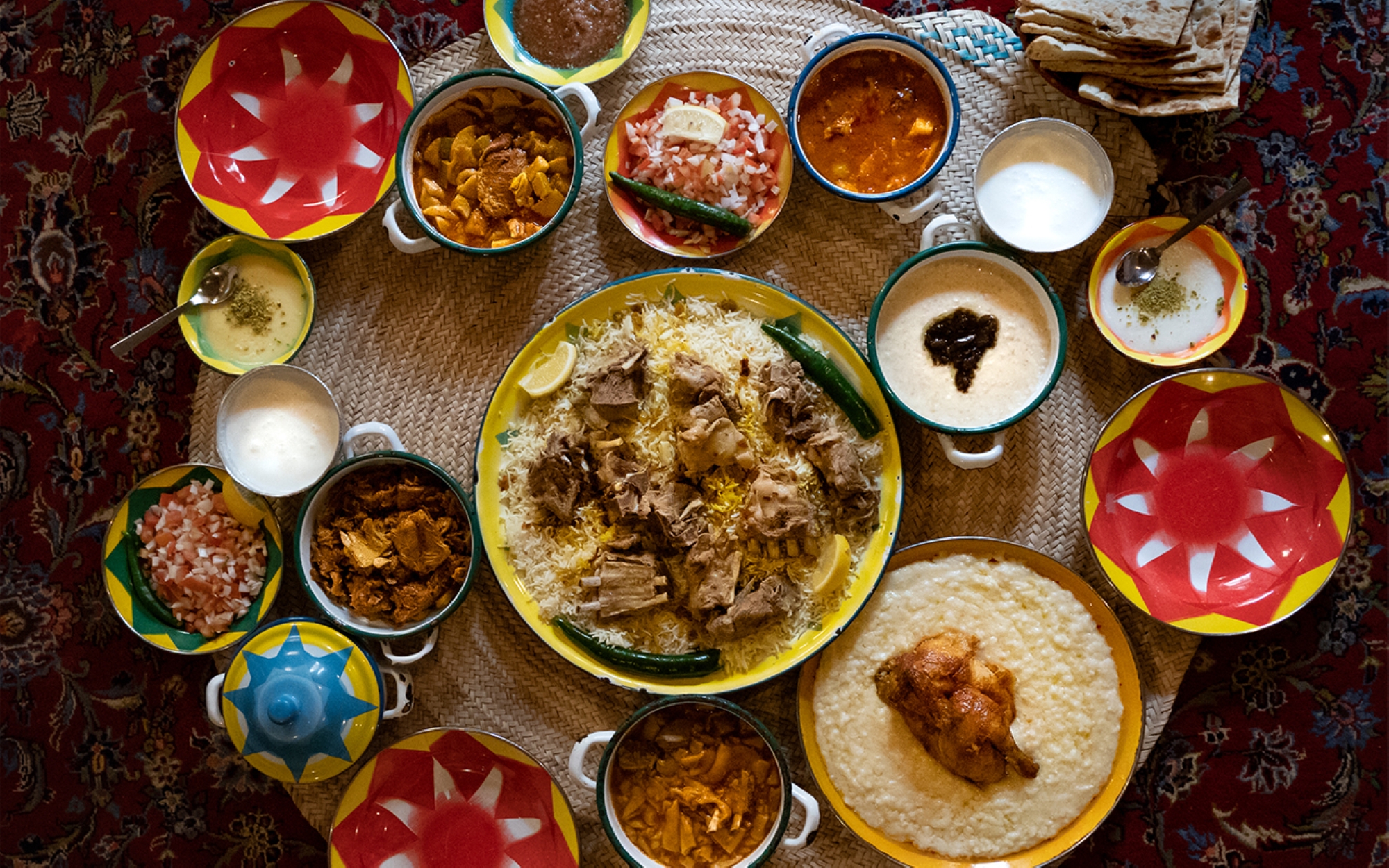
Celebrating Founding Day
The Kingdom celebrated its first Founding Day on February 22, 2022, under the slogan The Day We Began. Since its announcement as a national occasion, it has been warmly welcomed and anticipated by Saudi citizens. This day holds profound significance in the memory of the people as the first celebration of the founding anniversary. The occasion was marked by several official events across various cities in the Kingdom.
The celebration of this day is distinct from other national celebrations in the Kingdom, as it aims to spread the culture of the founding society from the period when the First Saudi State was established. This includes traditional costumes, national songs, the Saudi Ardah dance, and Saudi coffee, allowing citizens to take pride in their historical and cultural heritage.
Among the activities celebrating Founding Day were performances of the national Ardah dance in public squares and venues across Saudi cities, performed by traditional troupes wielding flags and swords, symbolizing the state's glory and strength. Parades showcasing traditional costumes were also organized, with citizens wearing heritage attire to express their pride and national identity. The Saudi Fashion Commission issued a special Founding Day Fashion Guideline, with the slogan Our Clothing in Our Early Days, to encourage participation in the celebration by wearing traditional garments.
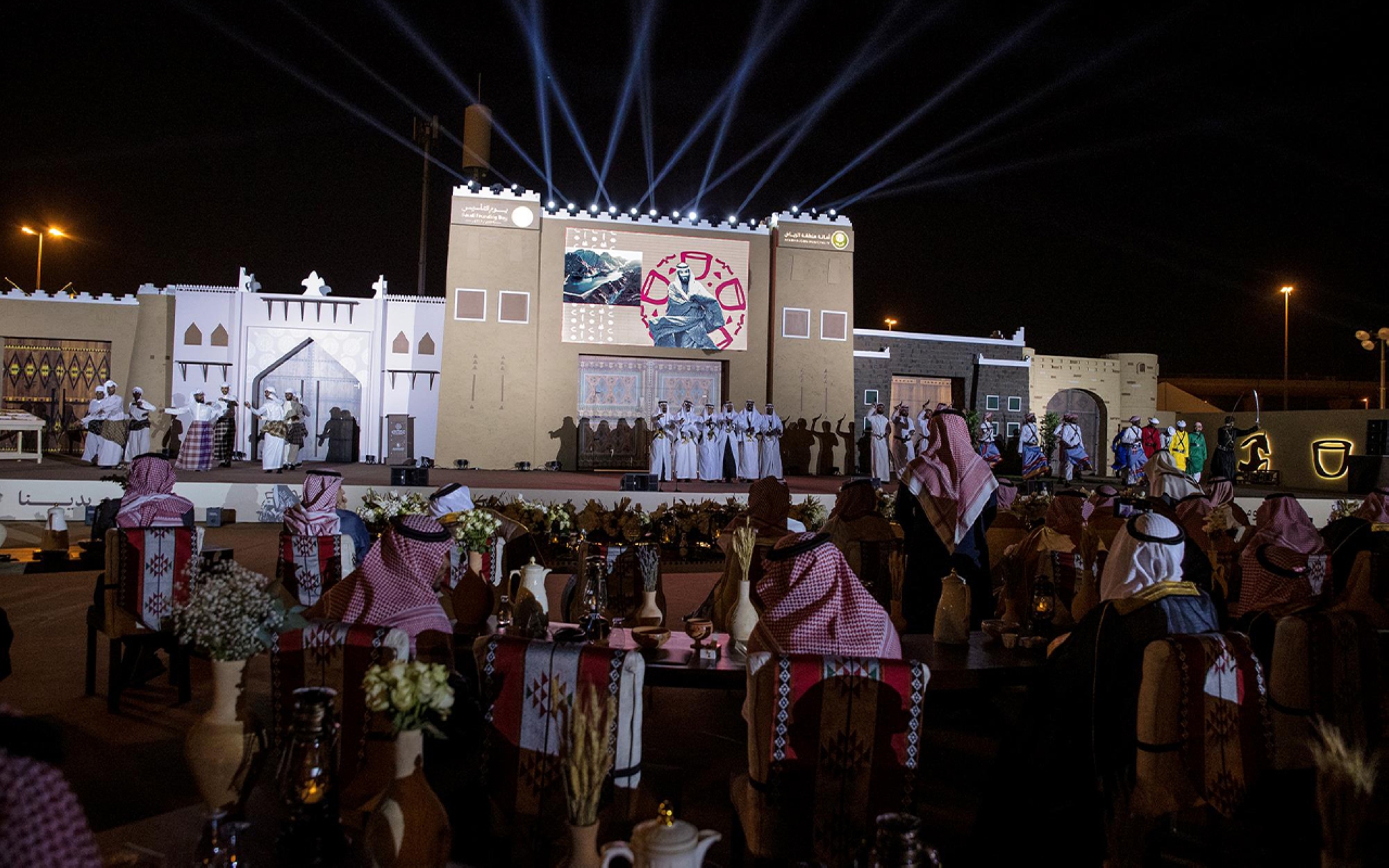
Related quizzes
